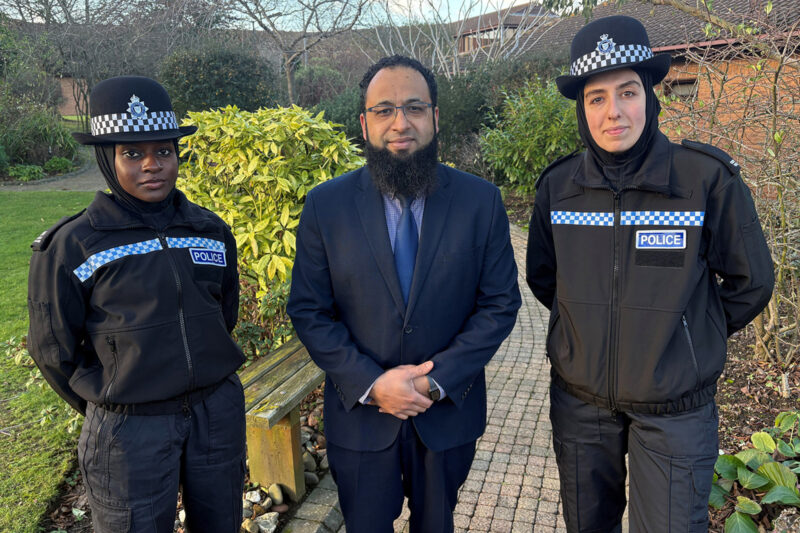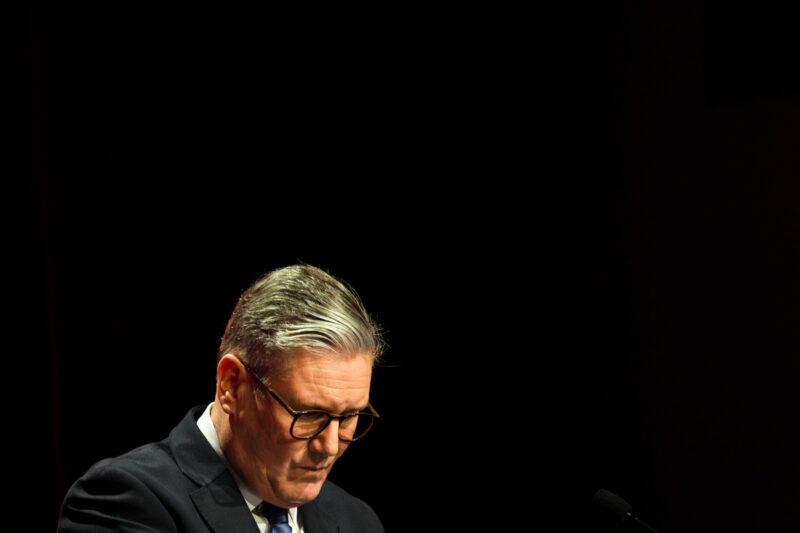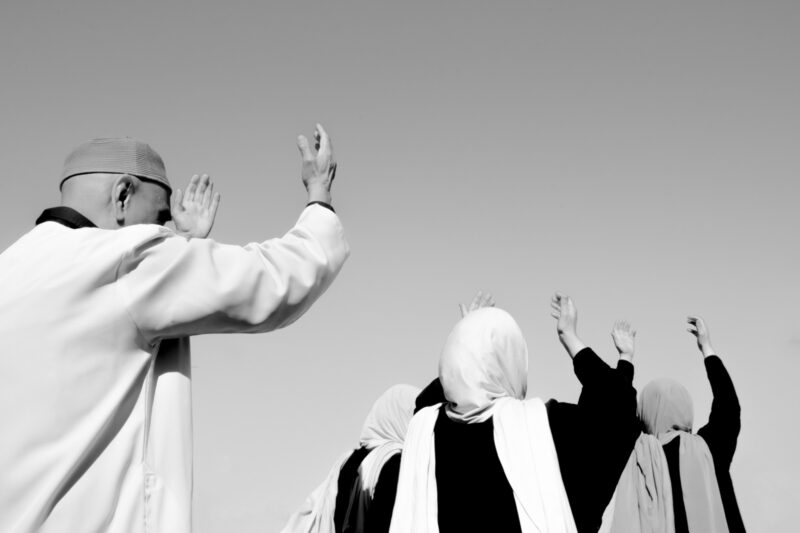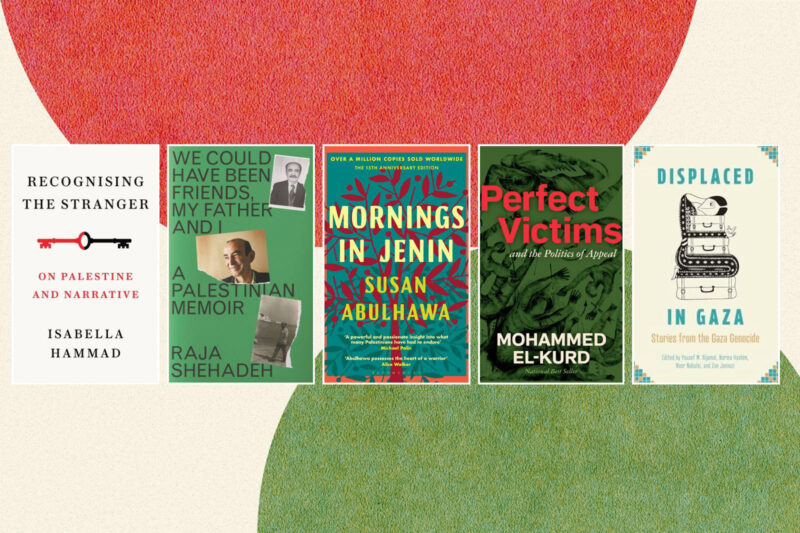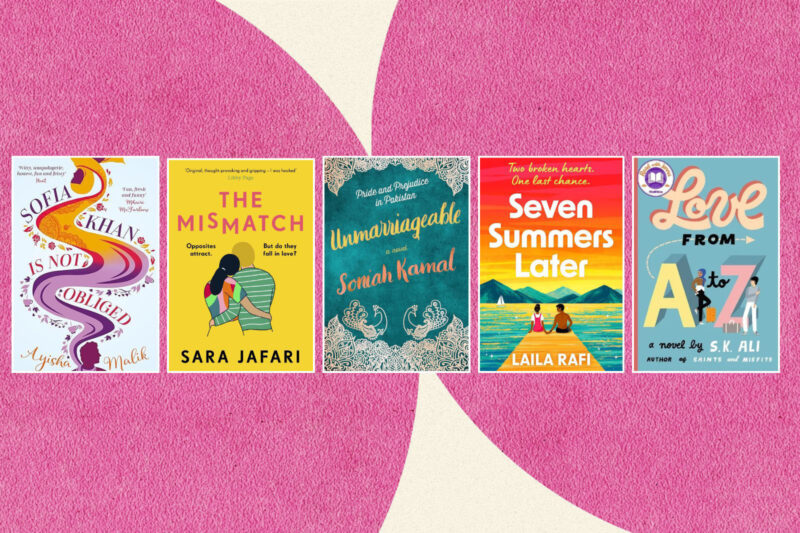‘Every Qur’an has its own history’
From demanding restorations to delicate repairs, Ziyaad Lorgat is keeping the traditions of bookbinding alive and well in Leicester
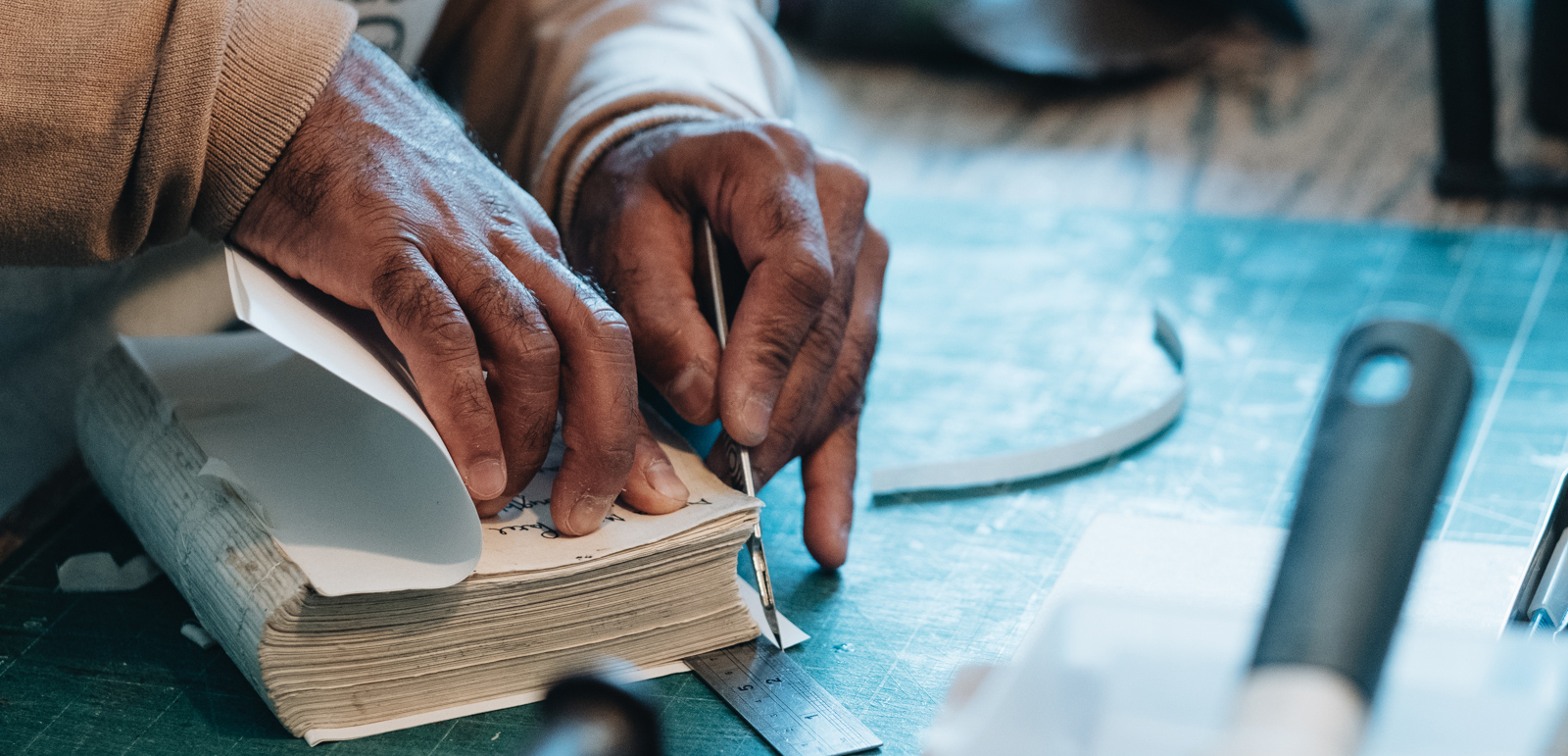
When Ziyaad Lorgat opens a book, it’s not just to read the stories inside. He does so slowly, carefully feeling the weight and grain of the paper. He can date the pages, even telling you where they were published, by the way they have been stitched or what kind of material has been used to make their spine and protective covers. He notes the thread — cheap polyester or fine silk — and whether the glue was industrially produced polyethylene vinyl acetate or an older adhesive made of starch or animal gelatin.
“Every book has its own history. You can tell a lot about who it was for, just by how it was made,” he says.
Observing details seldom noticed by even the most ardent bibliophiles is the bread and butter of Firdose Fine Bindery, Lorgat’s business. The hours he spends in solitude at his workbench, poring over stitching, binding techniques, sewing endbands and amending torn pages have made him the man people go to when they want to repair ageing and damaged Qur’ans.
From his home in Leicester, Lorgat, 50, uses traditional, manual bookbinding methods. While he offers services to the general public, he specialises in repairing Islamic literature, from Qur’ans passed down through generations to old Du’a and Seerah books. Since starting the bindery four years ago, he has built up a diverse clientele, ranging from everyday Muslims across the UK and Europe to international collectors who own volumes that date back to the 14th century.
The growing demand for Lorgat’s services are partly driven by his location. Before he opened up shop, British and European Muslims who wanted to get a Qur’an repaired properly would likely have ended up spending a significant sum sending it to Turkey, where traditional methods of repair and restoration are still widely practiced and taught.
“Because I am a practising Muslim, clients know that I’ll treat the Qur’an with extra respect, and pay attention to the details that someone who isn’t Muslim wouldn’t necessarily notice,” he says.
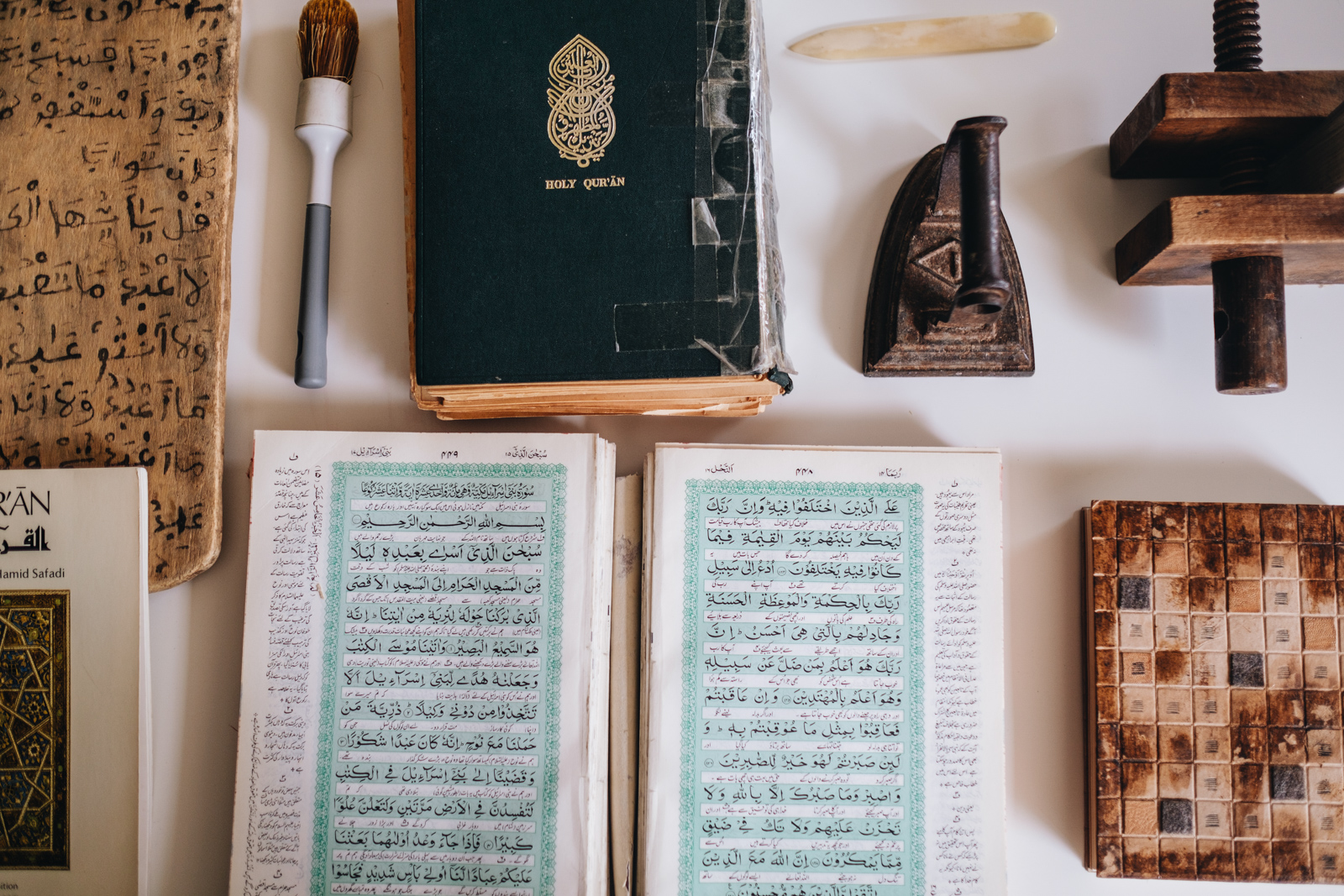
Lorgat notes that he keeps the remnants of old Qur’ans and gives them back after a project, because even scraps of paper and glue “need to be buried in the proper Islamic way”. When carrying out repairs, he ensures that he is in a constant “state of wudu” — a physical and spiritual cleanliness that can, in some cases, mean performing ablutions more than a dozen times in a day.
Lorgat is one of just a handful of professional bookbinders working in the UK. In the Victorian era, the job was viewed as a respected craft, with practitioners often contracted to produce books for wealthy individuals and powerful institutions such as the government, universities and churches. Today, in the age of industrial mass printing, demand for manual bookbinding has diminished. For those still in business, most of their work focuses on repairing and conserving old books.
Born in Yorkshire, Lorgat moved to Leicester as a teenager. After studying chemistry at university, he worked as a landscape gardener in his 20s and 30s. In his free time, he studied leatherwork in Walsall. In a rented room at a community centre in Leicester, he started crafting bespoke cases for Qur’ans known as juzdaans. In 2015, while making one for a hafiz, he was asked if he would also try to fix their torn, ageing Qur’an.
“After that, I found my calling,” Lorgat says. “Off the back of that project, I had a few more requests to repair Qur’ans and ended up renting a room in the local community centre to work on them.”
Initially, he applied his leatherworking skills to bookbinding. As his abilities improved, Lorgat sought guidance and mentorship from the small but dedicated community of binders living in his local area. Among them was former rugby union international Paul Dodge, who played for Leicester Tigers and England in the 1970s and 80s. “He’s given me a lot of help over the years,” Lorgat says, adding that Dodge embosses his Qur’ans with gold leaf.
During the Covid-19 pandemic, Lorgat moved out of the community centre, and set up a larger workshop in a corner of his house. Neatly arranged around his work station are reams of papers and industrial-grade cardboard, glue brushes and knives to finely cut paper and leather. Covering half of his bench is a large, cast iron nipping press, a tool used by 18th and 19th-century bookbinders to ensure the glued pages of large books dry evenly. In the press are several Qur’ans he has recently repaired and refurbished.
Making a starch-based glue paste to attach decorative endpapers to a client’s Qur’an, Lorgat details the variety of work he has come across in the short time his business has been running. “A Qur’an might have some damage on the cover, some tears, and all that’s needed is for it to be rebound,” he says.
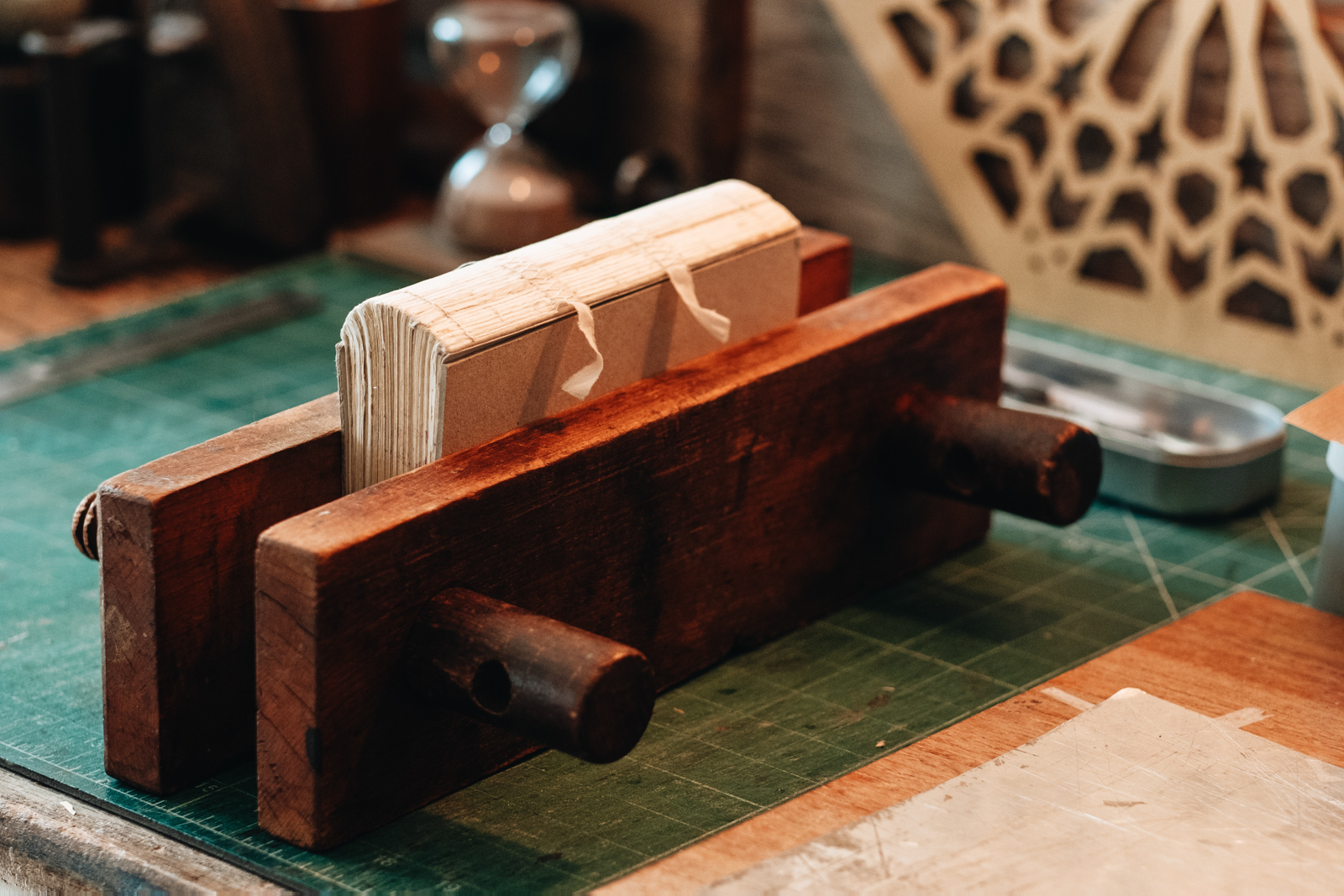
A job like that might take a month or two, depending on the materials required, or the specific requests from clients, such as wishing to retain pages with marginalia. Others can take months, even years of work, particularly Qur’ans made of finer, more fragile paper, or that have endured fire or water damage.
“One Qur’an I was working on had whole verses that were damaged,” Lorgat recalls. “I had to print out the missing pages myself, cut them down to the book size, then make sure the new pages matched the colours of the old ones. Let’s just say I had to be quite creative with how I was using teabags.”
Though Lorgat’s focus remains on repairing and restoring traditionally designed Qur’ans — most produced in the Middle East and bearing classical Islamic calligraphy with geometric patterns — he is keen to experiment with new bookbinding styles. He recently completed the world’s first pixel-bound Qur’an, a style developed by the Dutch bookbinder Ben Elbel, involving book covers made up of individual square boards, each covered in leather or suede.
He points to the markings on the pixels – seven lines, stamped across the book 48 times – which he explains references the Surah al-Fatihah, the first chapter of the Qur’an, and one of the most important in the Islamic faith, and is recited 48 times a day by Muslims during their daily prayers.
To Lorgat, the pixel-bound Qur’an is a perfect example of the contemporary binding practices he’d like to do more of. He notes that the evolution of the Qur’an has taken place over a long period, dating back to the time of the prophet Muhammad. Before the advent of the modern book, early versions were produced in unexpected and unconventional mediums, from wooden tablets to animal skins and on stone.
“The Qur’an that we recognise today is a modern phenomenon,” he says.
The act of preservation, according to Lorgat, requires a respect of tradition alongside an embrace of the present day. It’s that understanding that drives his passion for his work and his devotion to spreading the message of the Qur’an, which he believes to be far more important than what the book looks like.
“At the end of the day, the Qur’an isn’t there to be displayed. It’s there to be read,” he says. “it’s there to be understood.”
 Newsletter
Newsletter


